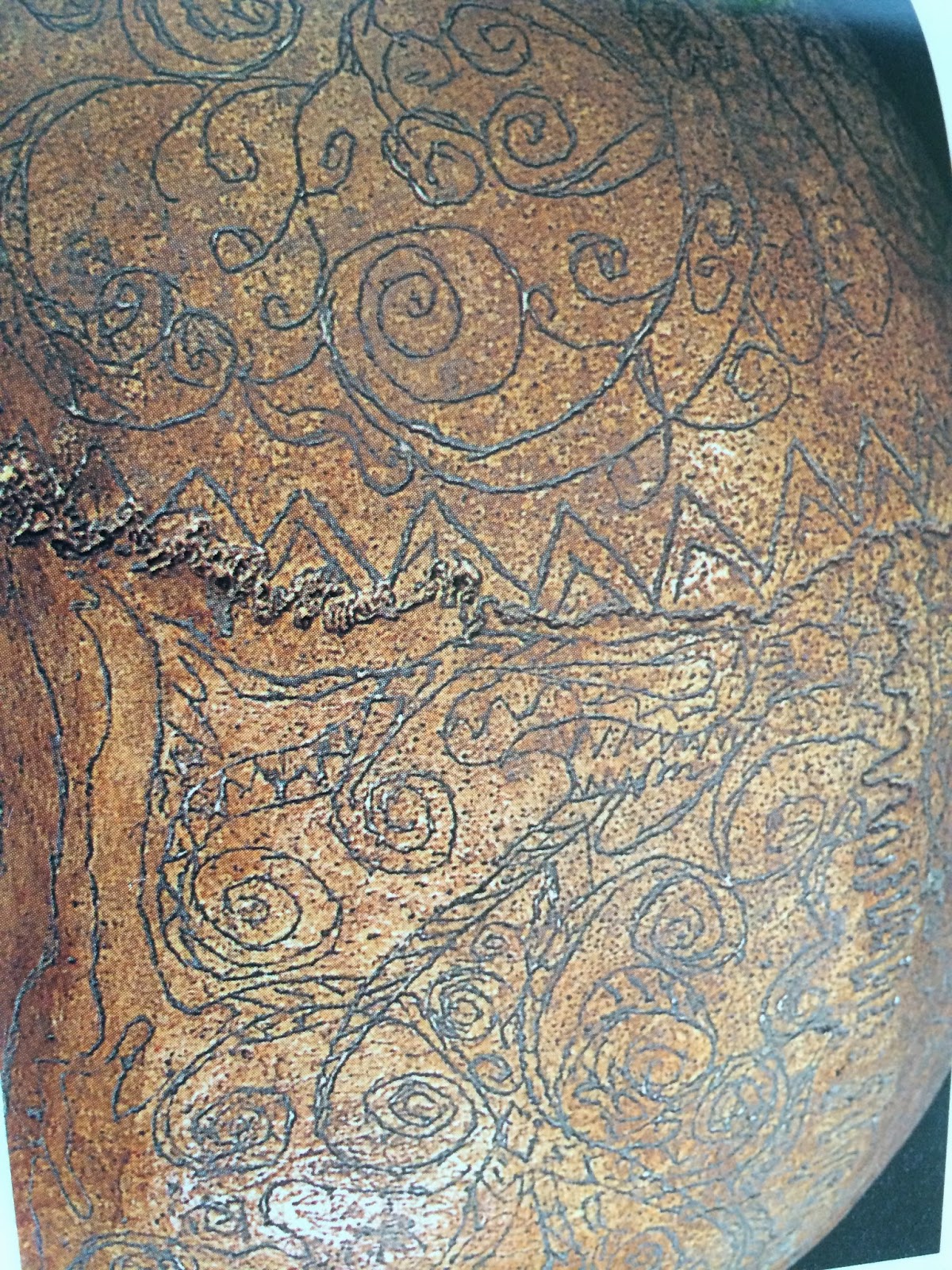 |
| Dayak carved skull, Sarawak, Malaysia from 1900s. H 16cm, dia 17.5cm |
I love guiding this human skull; mainly because it represents an important part of the belief system in Southeast Asia (SEA) and its very rare to have human remains in a museum. It's about 100 years old and is believed to be from the Kayan
Dayak community hailing from Sarawak, the Malaysian part of the island of Borneo. Headhunting is the ritual act of taking a human head and
had been prevalant in most of SEA communities for a few thousand years before the Europeans arrived here and banned it. It is a very complex subject and I am not going to get into it in depth or
state any opinions on the ethical aspects surrounding it, but will present a
very simplified view.
Dayak is the collective word given to the indigenous people of Borneo and it simply means inland or upriver. As the name suggests, most Dayak communities live along rivers and depend on it as well as the surrounding forest for their livelihood, so they form alliances with other groups living along the same river. Different communities have different beliefs around headhunting and perform different rituals so I am writing in very general terms. Dayak belief system was a mixture of ancestor worship and animism (from Latin animus meaning soul or life), which is
the worship of spirits attributed to natural phenomenon and also
inanimate objects. For example; thunder, lightening, earth, trees are said to
have spirits. There are both good spirits and evil spirits but they have to
be in harmony for the cosmos to be in balance.
If there is an illness, disease or crop failure, the Dayaks believe
that the cosmic balance is disrupted and evil spirits need to be appeased through rituals that require human
sacrifice, mainly procuring heads of enemies. Why the human head? Some Dayaks believe
that it contains the human soul (a very powerful spirit) and because it contains the face, it is a symbol
of a human. The
decision to procure a head was a serious one and the entire community made the decision together. Once the decision was made, a headhunting
raid was organized and only men participated in it. It is also not to be
confused with an act of war and the enemy victim was not a specific target but could
be anyone. Once the victim was decapitated, the body was left behind (headhunting
was not related to cannibalism) and the head was taken back to the village where it was treated with great respect. When
the men returned from a successful raid, the women would welcome them home
with songs and receive the victim’s head in a very special cloth called Pua Kumbu which is woven using the Ikat technique. This would imbue
the cloth with magical powers of healing. After the raid, the men would get tattoos
marking their participation, usually on their shoulders and fingers.
 |
| Tattos showing he is a skilled headhunter, late 19th CE |
 |
| Skill headhunter with 2 skulls and his sword around his waist |
The head was usually smoked and kept in a very prominent
place in a longhouse, which is a communal village house. It would be offered food and drink like eggs, rice, rice wine and these would be placed in a basket under the head. The reason for the offerings and ceremony was to entice the spirit contained in the head to become a friend of the community
and work in their favour, and also to ward off the evil spirits, thus bringing
prosperity to the community. Skulls are not normally carved so the one in ACM
is very rare. Unfortunately, we don’t know why it was carved.
 |
| Closeup of the skull showing intricate patterns |
Headhunting is deeply rooted in the SEA ritual life and a
person who has taken heads gained stature in the community. Also, in some
warrior communities, it was a 'coming of age' for a boy. A boy had to prove
that he was a man and could only marry if he had taken at least one head. Headhunting
has been banned for over 100 years in Borneo, however it is so deeply entrenched
in the lives and folklore of the Dayaks that mock raids and rituals are
still practiced; but luckily for tourists, a coconut is used to symbolize a
head. There have been some rumours in the 20th century about headhunting incidents especially during world war II and also some cases reported in the Indonesian papers as recently as 2001.